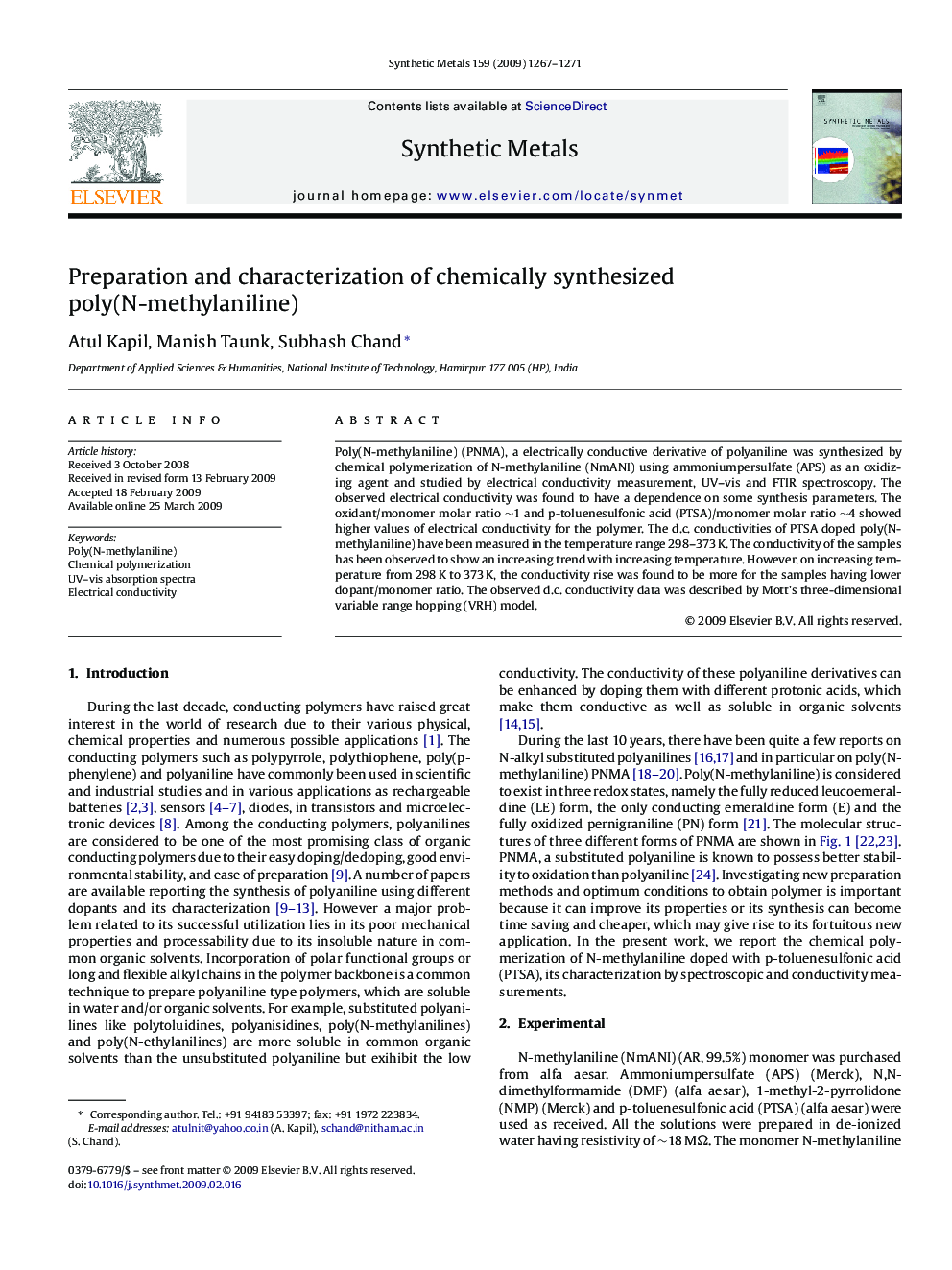| Article ID | Journal | Published Year | Pages | File Type |
|---|---|---|---|---|
| 1443110 | Synthetic Metals | 2009 | 5 Pages |
Abstract
Poly(N-methylaniline) (PNMA), a electrically conductive derivative of polyaniline was synthesized by chemical polymerization of N-methylaniline (NmANI) using ammoniumpersulfate (APS) as an oxidizing agent and studied by electrical conductivity measurement, UV-vis and FTIR spectroscopy. The observed electrical conductivity was found to have a dependence on some synthesis parameters. The oxidant/monomer molar ratio â¼1 and p-toluenesulfonic acid (PTSA)/monomer molar ratio â¼4 showed higher values of electrical conductivity for the polymer. The d.c. conductivities of PTSA doped poly(N-methylaniline) have been measured in the temperature range 298-373Â K. The conductivity of the samples has been observed to show an increasing trend with increasing temperature. However, on increasing temperature from 298Â K to 373Â K, the conductivity rise was found to be more for the samples having lower dopant/monomer ratio. The observed d.c. conductivity data was described by Mott's three-dimensional variable range hopping (VRH) model.
Keywords
Related Topics
Physical Sciences and Engineering
Materials Science
Biomaterials
Authors
Atul Kapil, Manish Taunk, Subhash Chand,
